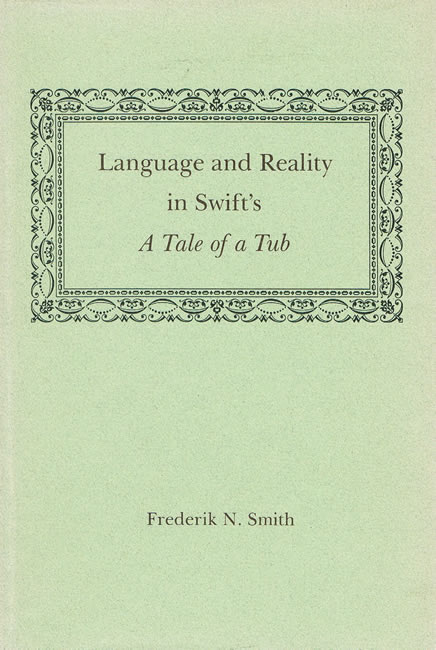Language and Reality in Swift’s A Tale of a TubFrederik N. Smith |
 1979 LITERARY CRITICISM / European / English, Irish, Scottish, Welsh 172 pp. 6x9  $19.95 paper 978-0-8142-5354-0 Add paper to shopping cart Shopping Cart Instructions Review/Change Shopping Cart & Check-out | |||
|
The noted scholar Irvin Ehrenpreis refers to “the brilliant style which makes A Tale of a Tub the greatest prose satire in English.” Professor Smith affirms that judgment as one with which few would quarrel, but charges that most critics, like the ones whom Swift himself parodies, have too often been content merely to catalogue Swift’s stylistic devices or to cite them as examples of the Modern Author’s faults. What has never been fully recognized is that the young Swift, after his early imitative and conventional odes, was experimenting with a new tone and a new genre, and was using a style to work his way toward an understanding of the relationship between language and reality. This was a crucial issue in the seventeenth-century, and it provided Swift with one of his most persistent themes and established the basis of his unique style, which, instead of character or plot, bears the burden of his satiric message. Professor Smith takes style to be neither the same as a writer’s ideas nor the vehicle for their conveyance, but rather his habitual means of arranging concepts, experiences, and implications into a coherent and significant form. The linguist Benjamin Lee Whorf posits a connection between language and reality so intimate that the systematizations in a particular language dictate the reality of the person who speaks that language, forcing on him certain perceptions, denying him others, and effectively channeling his reason. Dr. Smith infers a comparable link between an individual’s private habits of language and his private perception of reality, and argues that the uniqueness of a writer’s style represents his personal organization of the world—his personal arrangement, not merely of words, but or reality itself. If words and sentences can lead us back to a writer’s epistemology, Dr. Smith argues, then in A Tale of a Tub contrasting configurations of style direct us simultaneously to the opposing epistemologies of Swift and his Modern Author. In encountering two different styles, we discover also two conflicting approaches to life: one aloof, intellectualized, and abstract; the other earthy, sensate, and empirical. With artful juxtaposition, adroit interplay, and pointed disparity, Swift manipulates these modes of discourse to reveal two radically different notions of truth from which, paradoxically, truth itself emerges. The Modern Author pigeonholes actual experiences by genus and category, transforms real things in aphorisms and maxims, and argues the concrete into abstract system, analogy, and personal theory. Swift views the world as beyond easy schematization and apt to be disturbingly and stubbornly paradoxical. It is not by chance, Dr. Smith points out, that what strikes us most forcefully in the satire are not the mental configurations worked by the Modern Author on the face of a palpable reality, but that reality itself. We retain an indelible memory of a great many physical objects in precise and vivid images—a sheer accumulation of empirical fragments that effectively undermine rationalism and are the touchstones against which all else must be tested. For Swift had, by the end of the seventeenth century, made an irrevocable commitment to empiricism, a commitment that lies at the roots of that formal realism characteristic of his own Gulliver’s Travels, the novels of later writers, and the genre of the novel itself. Frederik N. Smith is associate professor and head of the Department of English at the University of Akron. | ||||

